Alicia Lindhorst and Beth Flick
Akin Prekindergarten
Southern Region Early Childhood Program
Franklin County, Illinois
2009
The Akin Prekindergarten provides full-day early childhood education for 17 children ages 3 to 5 years old in Franklin County, Illinois. The program is part of the Southern Region Early Childhood Program, a 5-county collaboration of 15 school districts, Head Start, and the Southern Illinois University Child Development Lab. Collaboration staff members received training in the Project Approach, and the Cracks and Holes Project was the first conducted in the Akin Prekindergarten. The project lasted approximately 2 months.
Phase 1: Beginning the Project
The children were running in the field beside the school playground when some of them noticed cracks in the ground. They wanted to know why the soil had cracks. We were surprised at the children’s interest in this simple natural phenomenon, and we decided to develop it as a project investigation. They had many questions, but their main question was “What caused the cracks?”
The children generated several hypotheses about what caused the cracks:
- An earthquake
- Old train tracks
- Four-wheeler tracks
- Tractor tracks
- Ants
- Snakes
- A dog
As teachers, we decided that it would be important to let the children experiment and figure out the cause of the cracks on their own.
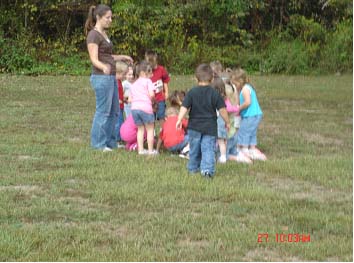
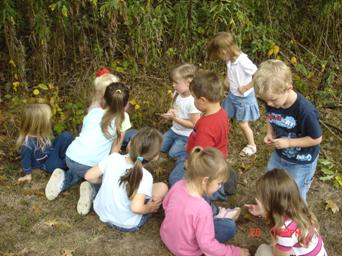
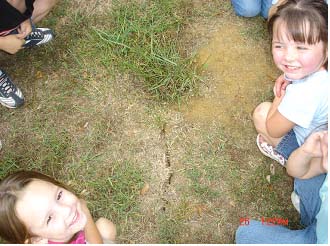

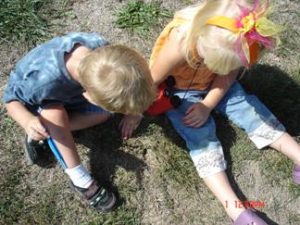
Phase 2: Developing the Project
The children spent a lot of time investigating the soil and making guesses about how the cracks got there. They saw themselves as detectives. In fact, during the investigation, several of the children called themselves “Scooby Doo Dog Detectives.” Parents became involved by letting us know that their children had been noticing cracks and holes everywhere!
The children used many scientific tools to conduct their investigation, including tweezers, magnifying glasses, a bug viewer, binoculars, a tape measure, little tablets of paper, and clipboards with pens for sketching or drawing. We also visited several online sites using the computer in our classroom. We thought that online research might help the children find answers to their questions to eliminate faulty hypotheses and to figure out the sources of the cracks. We found that each discovery online seemed to generate new questions. As the children saw pictures on the computer of different types of tracks, they came up with new guesses about the causes for the tracks.
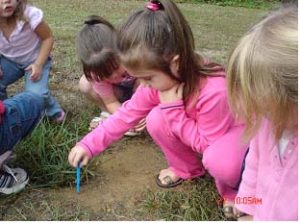
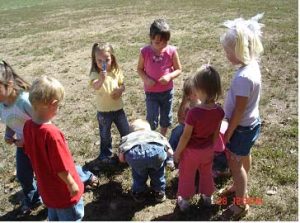
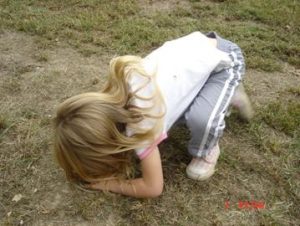
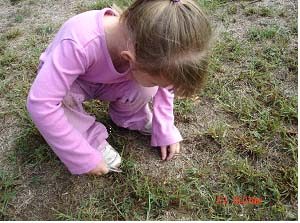
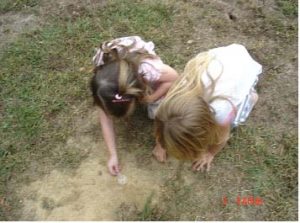
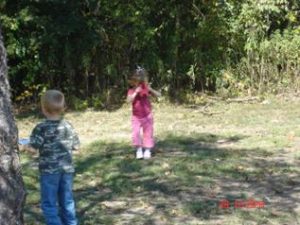
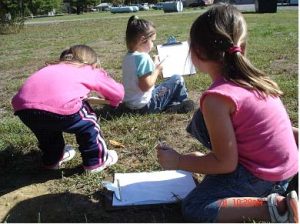
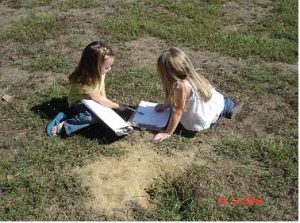
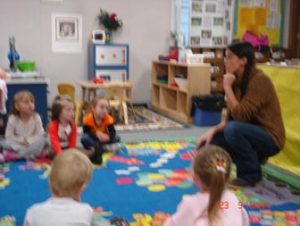
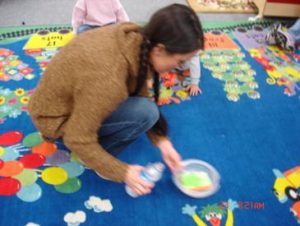

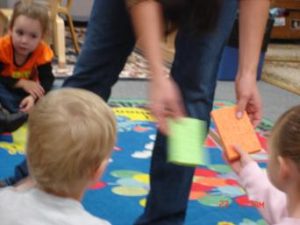
The children’s close observation of the phenomena was evident in the drawings they made on plain paper that was attached to clipboards with markers. They drew the cracks and holes in the soil. They also combined clay with different materials in order to create cracks in the clay.
We invited Ms. Sarah Tepavich from the Illinois Farm Bureau to be a guest expert for the class. She used wet and dry sponges to help the children understand that lack of moisture was the cause of the cracks and holes on the playground.
Phase 3: Concluding the Project
Once the children found the answer to their question about the cracks and holes on the playground, their interest in the project faded quickly. Shortly after the guest expert’s visit, we got a lot of rain, and the children observed that the cracks were not as noticeable. They had to look really hard to find them. Over time, the cracks disappeared completely.
As a result of this investigation, the children learned that when soil is dry, it will become cracked. They learned that the more dry the soil is, the more cracked it will become. They learned that when moisture is added (rain), the cracks will fill in with soil.
Teacher Reflection
The Cracks and Holes Project helped us learn that it is beneficial to let the children try to figure out the answer to their question on their own. They learned so much from the processes of investigating. We did not provide the answer to their question, even though it was obvious to us that the soil was cracked because of drought. There would not have been motivation to pursue the investigation of the phenomenon if we had given them the answer.
We were surprised that the children’s interest in the soil was strong enough to support a project! It was even more surprising that the project lasted 2 months. We believe that the Cracks and Holes Project was good because the children were interested and able to investigate firsthand and because it provided a gateway into a project on leaves and trees. Eventually, we began an investigation about the animals that live in the trees near our playground.
It was meaningful to us that the children showed such excitement and continued daily interest. They would run out to the field every day with their tools, ready to observe. We were also pleased that in the course of the project the children were able to provide us with many of their thoughts and ideas.

